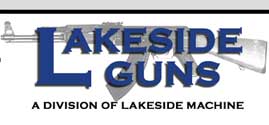|
Below is a series of pictures
of one of the very first Tippmanns ever produced. This is a model 1917 and has
serial number 003. Its manufacturing address is in "New Haven, IN"
which was the first small shop Dennis Tippmann worked out of. There were 6 or
7 entirely hand made guns like this one, most of which were the 1919
model. Each gun of the 6 or 7 had progressive advancements in design
until the production design of today was finalized. Keep in mind this is made
from bar stock and NO CASTINGS of any kind were used.
The pictures are best
viewed with a 750 pixel screen width. I apologize for the large pictures and
the load time, but this is too important of a firearm to skimp on the size of
the pics. This first series of pictures will show the prototype when its cased
and set-up. The link at the bottom will send you to the next page where I take
the entire gun apart and show the internal mechanism. Enjoy this seldom
seen glimpse into the first stages of a firearm legacy..............Eric
J. Graetz
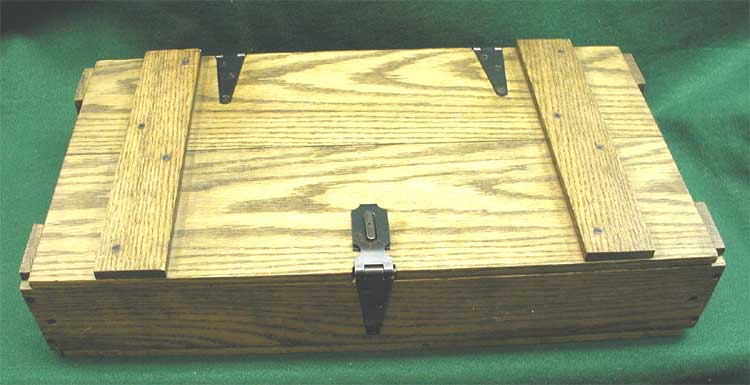
The picture above is the oak
carry/transport chest of this early Tippmann. The dimensions of this crate are
4.5" high X 11" wide X 21.25" long with 8" long leather
handles on each end. The front latch is similar to a padlock hasp with a
turning knob to retain it. This size and shape of crate is only seen with
these early models as the production 22LR guns needed the tripods riveted to
the guns making this crate obsolete.
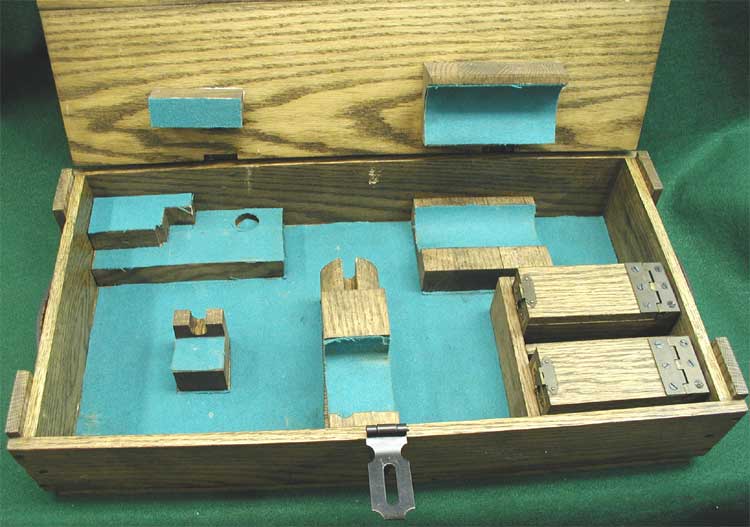
The inside of the crate is
lined with felt fabric. The partitions and riser blocks are made of oak and
covered where the gun parts would rest. The barrel area is different for the
1919 models as well as the ammo boxes. The 1919's crates would have a smaller
barrel shroud support and would have had metal ammo cans.
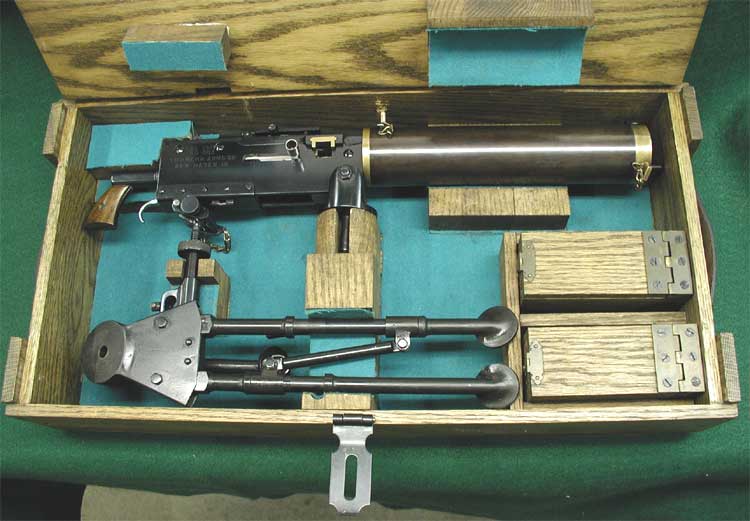
The picture above shows the gun
as it would rest in its crate for display and transport. Notice this early
model is removable from its tripod as well as its pintel.
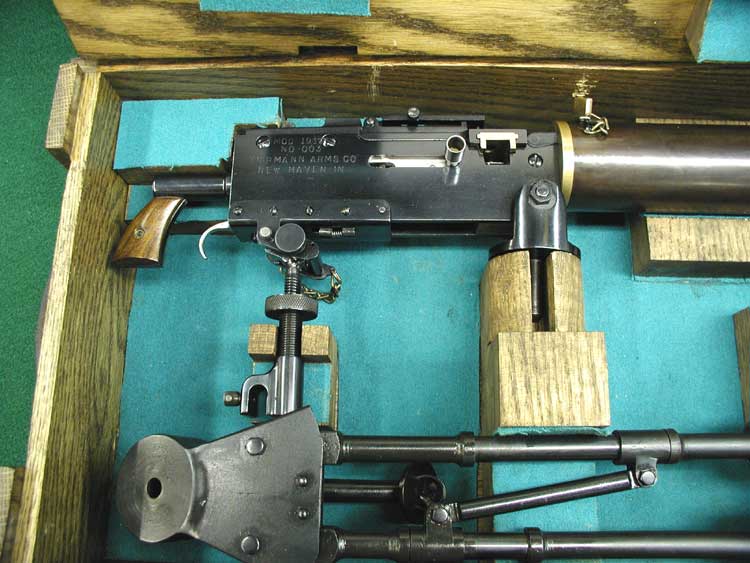
Here is a close up detail of
the receiver info. Notice the differences in this guns manufacture from the
later ones.
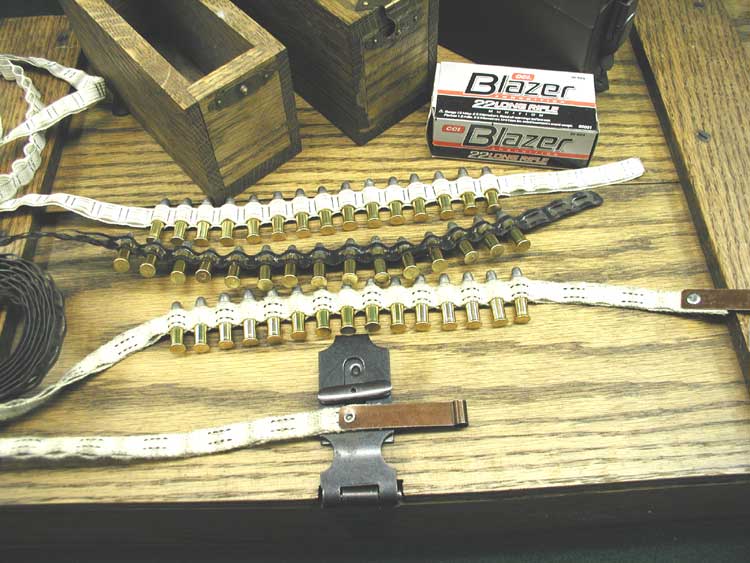
Above is a picture of the
opened wood ammo boxes as well as the first generation belt material. The
first belts were made by hand. This belt consisted of two pieces of material
with staples making the pockets. Each pocket location was laid out by hand and
stapled together one at a time. I was told each belt would take over an hour
to manufacture. The middle black colored belt is the later production
made of plastic banding type material. Finally the cotton woven belt was
produced in 1985 and this is what we use today. Notice each belt has 15 rounds
of ammunition loaded into it and the lengths vary tremendously. I did fire the
gun with each belt and it worked just as good regardless of the belt used.
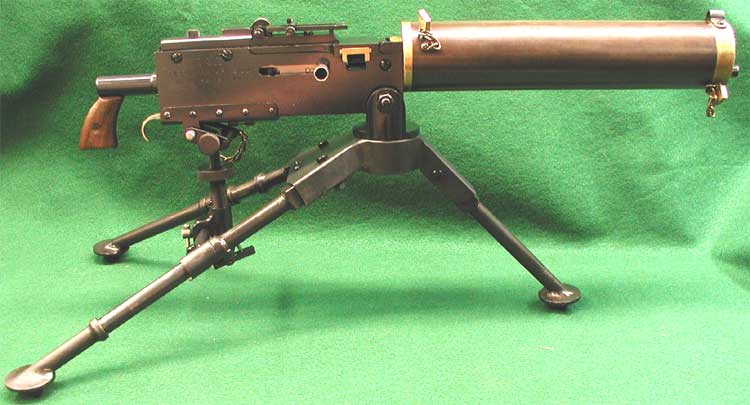
Early #003, model 1917 set up
on its tripod assembly.
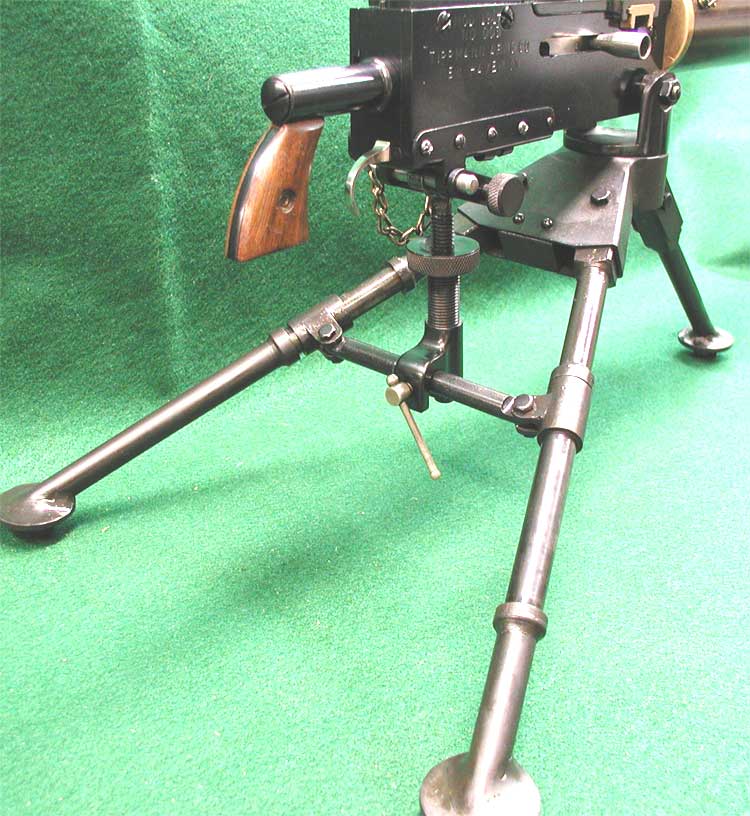
Above is a rearward pic of the
right side plate. On this model the trigger is pulled straight backwards to
fire the gun instead of an upward motion as in the later guns. The tripod and
T&E assembly have tell tale marks of hand work. Notice the screws in the
bottom cover, they are the slotted type instead of the button head screws used
today. The front screw on the bottom cover is actually not a screw at all, it
is a hammer pivot pin for the trigger internals which I will cover in the next
page if pictures. The buffer screw on the pistol grip assembly is removable
but not used as a buffer, it is a takedown screw. The tripod center is NOT a
casting like the production guns, it is a formed sheet metal part with a lot
of hand forming done to it.
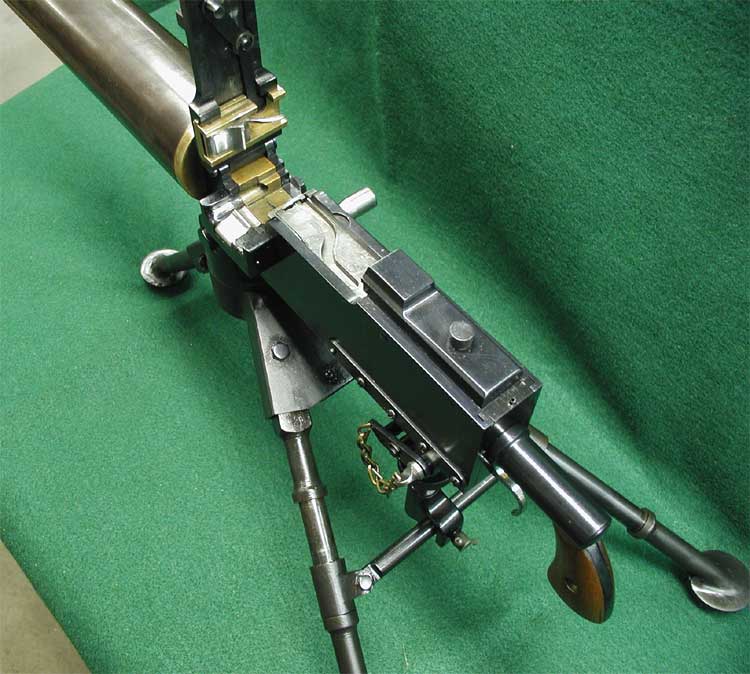
Here is a look at the top cover
when opened. The breech block on this model is actually brass as well as the
top cover slide. The cam slot in the top of the bolt was machined by hand
without the aid of CNC machinery.
Now that you have seen the
exterior and accessories of this prototype, lets explore the inside and see
what makes it tick!!! Click the highlighted heading below and it will take you
to the next page.
Prototype
Page 2 "The Internals"
return to gallery
| 
